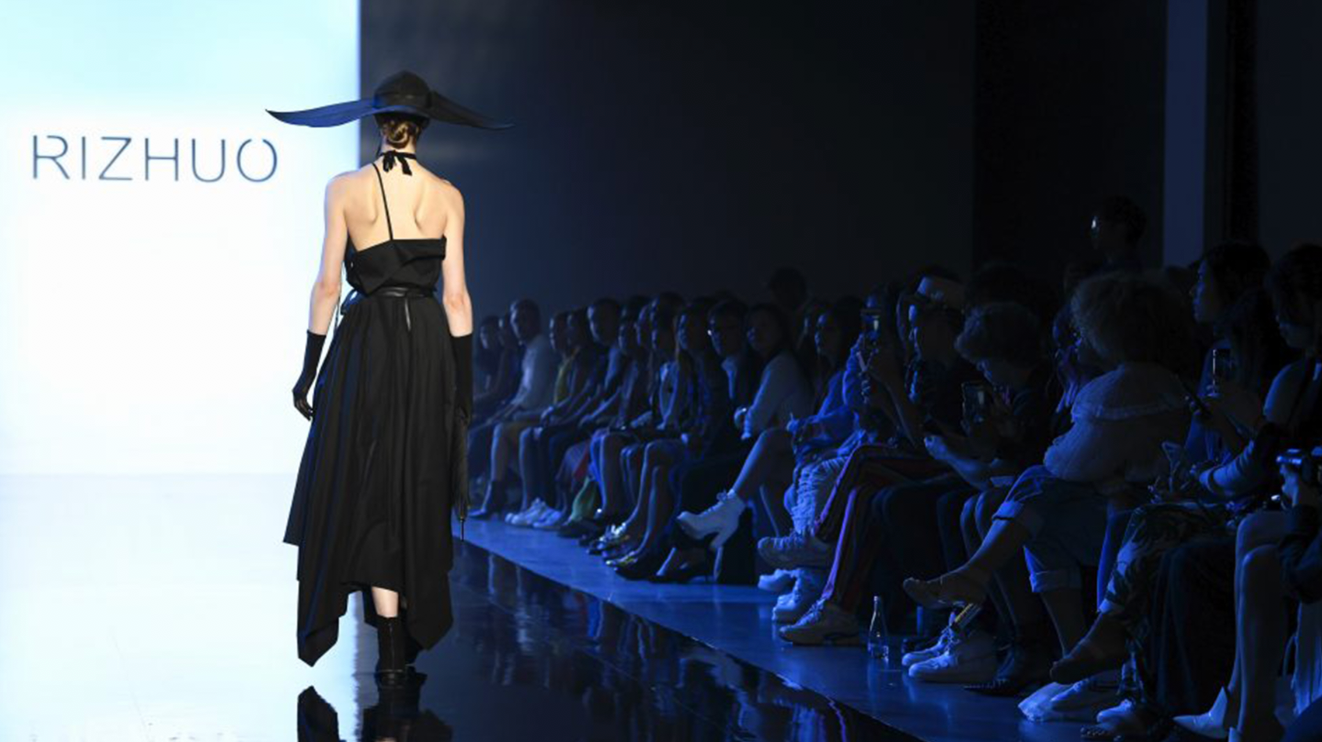For the third time, online Chinese retail giant Tmall provided a platform for Chinese designers at New York Fashion Week with this year’s Spring 2020 show. Themed “Tmall China Cool,” Tmall’s presentation featured five brands that represent the full spectrum of the Chinese market, from the budding Parsons graduate i-am-chen to the decades-old intimates label THREEGUN.
Tmall’s fashion week aspirations were clear from the get-go: The digital juggernaut wants to establish China as a dominant player on the global fashion scene and showcase the country’s homegrown creatives on the world’s most influential fashion stage to bring awareness to its creative potential. “China has grown from a manufacturing powerhouse to consumer buying powerhouse, and now we want to show that Chinese designers are innovative and creative enough, forward-thinking and trend-worthy,” says James Lin, Head of Fashion of Alibaba North America.
Indeed, China’s role in the fashion industry has quickly progressed from manufacturer to consumer, and now, China is slowly pushing to build the prestige of its creatives to Western levels — and Tmall hopes to play a big role in driving that evolution. But maybe even more valuable than international acclaim will be the recognition Tmall will receive back in China, thanks to a “we showed at NYFW” stamp that will help drive sales and brand recognition over there. While each participating brands stood to gain from this NYFW exposure, the commercial interests of the larger labels couldn’t help but feel at odds with those of the younger designers.
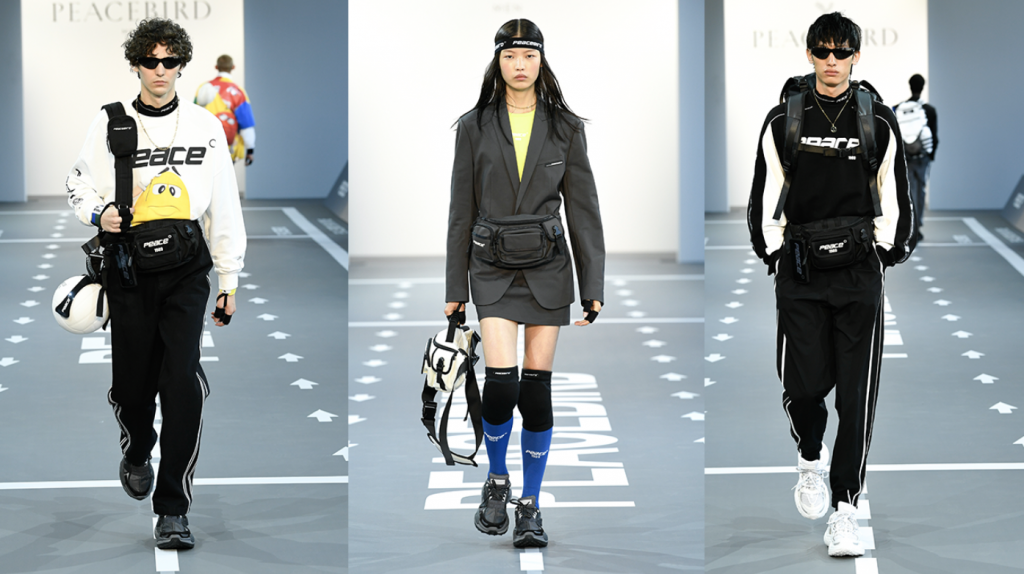
The day kicked off with the Chinese labels Peacebird and THREEGUN — the brands with perhaps the most to gain from showing at Tmall’s NYFW. Both are mega commercial brands with long-standing histories in the Chinese fashion industry. THREEGUN emerged as an intimates brand even before the establishment of the People’s Republic of China while Peacebird has a two-decade history selling menswear, womenswear, and kidswear.
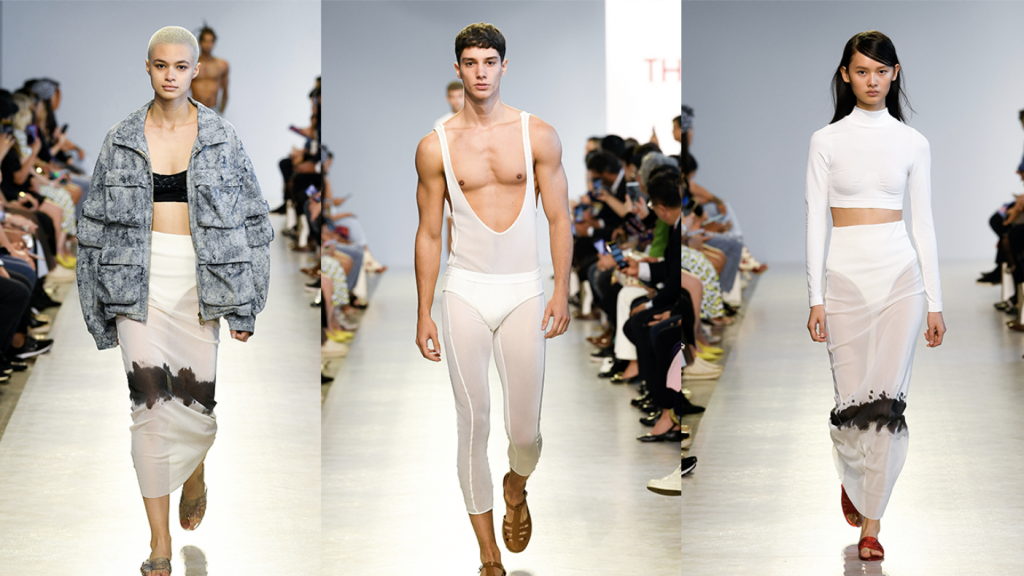
Both brands took a stab at presenting their collections with a fresh eye, looking at the NYFW platform as a way to reinvigorate their brands and presumably attempt a brand facelift for consumers back in China. THREEGUN asked the emerging Chinese designer Chuang Qu to design their spring collection as a way to frame the brand as a main-stage contender while also appealing to a younger demographic. “We really want to focus on the quality of our products and make it speak for our brand,” says Qu. “Chinese beauty is so diverse, and you do not need a symbol to express that kind of beauty. Made in China and designed in China is already a representation of the Chinese culture for our brand.”
Meanwhile, Peacebird has made wider attempts in recent years to appeal to a younger demographic by launching collaborations with Coca-Cola and the Chinese food delivery platform Eleme (“饿了么”). The brand fumbled a bit during its early years because of an unclear direction, but a strong collaboration strategy — along with its distinguished history in the industry — has earned it a recent comeback. The Fashion Week collection was a continuation of that long-term strategy, and the brand received acclaim from Chinese netizens’ for its design and entertaining collaborations.
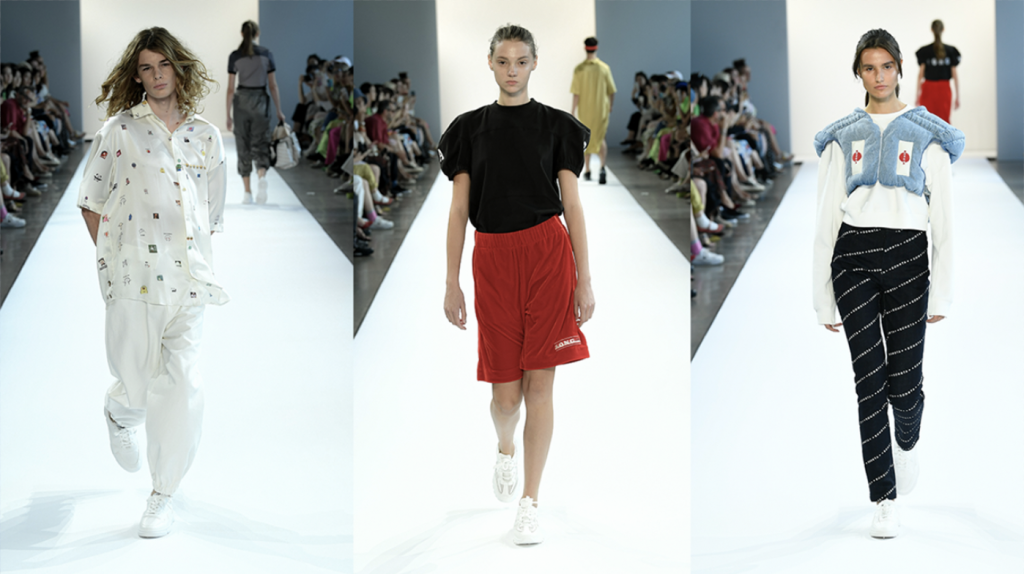
Later in the day, the show featured two of its freshest voices: SONGTA and i-am-chen. A conceptual artist turned fashion designer, Song Ta established his luxury brand just four months ago, but he’s nevertheless hoping to become a mass-market label. SONGTA is positioning itself among foreign counterparts like Ambush and FENTY, and the founder believes there’s an open slot in China’s luxury streetwear market for homegrown talent. “I am not an independent designer,” says Song. “I want to create something for the mass market, some trendy streetwear that young people can afford and will wear on the street on day-to-day occasions. But I am a luxury brand.”
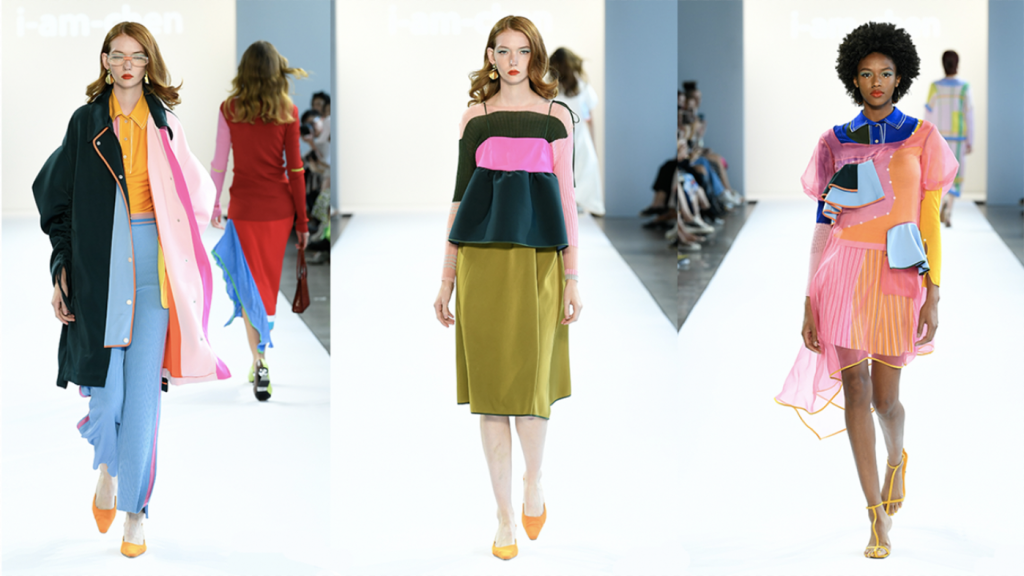
Zhi Chen, the founder of i-am-chen, represents another type of designer in China — young and emerging. A semi-finalist in the 2018/2019 International Woolmark Prize Hong Kong and a recent graduate of the Parsons School of Design in New York City, Chen offered fashion fans the highlight of the day with a knitwear-heavy collection that was likely to be a hit across a global market. “I think it is unreasonable and not cool to categorize people by age,” Chen tells Jing Daily. “My collection is for people who have a young soul regardless of age.” Chen also believes that the Chinese fashion industry is at a turning point. “The opportunity and support that the growing Chinese economy and market offers [Chinese designers] is something that designers from elsewhere in the world can never imagine,” Chen adds.
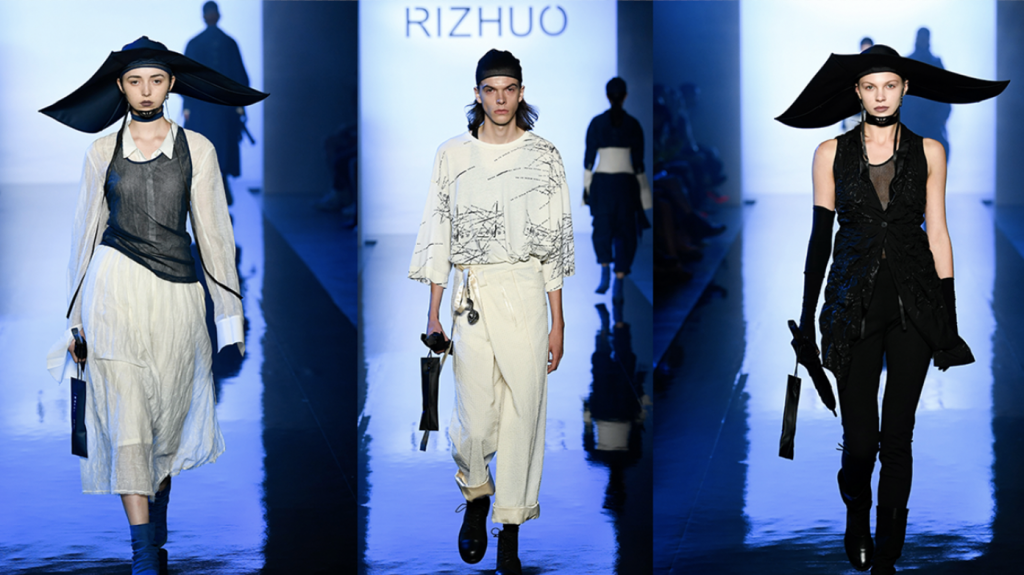
Rounding out the day was RiZhuo, a brand that sits somewhere between the large commercial brands and the more emerging designers. The brand started off selling on Taobao almost a decade ago, and after growing tremendously on that platform, started selling on both Tmall and JD. The collection called on a range of Chinese cultural inspirations for their collection, from ranger culture to the traditionally introverted nature of Chinese citizens. RiZhuo's collection was consistent with its past designs, which have seen high-volume sales on Tmall, but that highly commercialized look failed to translate on the Fashion Week runway.
In the end, the “Tmall China Cool” show was a balancing act of commercial and creative entities. This intersection is what drives Tmall’s success, and the Alibaba-owned platform has no reason to shy away from it. After all, it’s Tmall’s ability to appeal to a mass market on a commercial platform — while still selling itself as high fashion — which has stamped it as the go-to platform for fashion brands Stella McCartney and Valentino when they decided to enter the China market.
Indeed, a massive number of Chinese consumers look to the Amazon-like retailer to experience fashion in a way that’s completely unfamiliar within the Western market. “People go to Amazon to save time,” Lin says. “In China, people go to Tmall to spend time. They want the all-inclusive experience online on the platform, and the experience is all linked together, including fashion.” The Chinese consumer is comfortable spending their time and interacting with fashion on this very commercial platform.
But in the New York Fashion Week context, many of these brands felt out of step. And while all the participating brands weren’t the best contenders to help shift the perception of creative output in China, they did paint a holistic picture of the various pockets within the Chinese fashion industry. Viewers would be wise to look at Tmall’s NYFW shows as a way to deepen their understanding of the current fashion climate in China: a market that’s dominated by commercial players for decades but is also welcoming young designers with tremendous creative promise.
